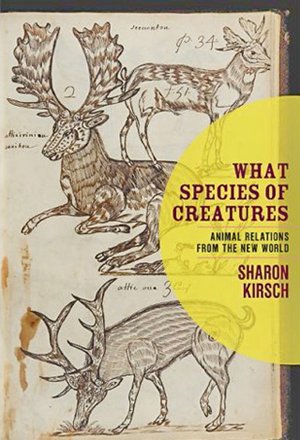What Species of Creatures:
Animal Relations from the New World

Support Canada's History in other ways (more)
by Sharon Kirsch
New Star Books, Vancouver, 2008
240 pp., illus., $19 paperback
When European explorers, traders, and settlers arrived in North America, not only did they find a great diversity of strange and wondrous creatures, their encounters with these unfamiliar animals often resulted in relations unimaginable in the Old World.
Consider Gabriel Sagard’s “companion muskrat,” or the playful polar bear David Thompson met at York Factory, or Samuel Hearne’s live-in beavers — any of which would have offended the strictly hierarchical relations among God’s creatures prescribed by European philosophers. That the beavers were “remarkably fond of rice and plum pudding … and would eat partridges and fresh venison very freely,” as Hearne tells it, suggests that their meeting with Europeans brought forth unusual behaviour from four-legged species, too.
In What Species of Creatures, Sharon Kirsch tells that these curious associations resulted as much from character traits peculiar to trappers and missionaries as from the unforeseen environments in which Europeans found themselves. The New World was a land of bountiful game as well as marvels like the hummingbird, for which chroniclers offered competing claims of its smallness and beauty.
The time Kirsch spent with primary sources is demonstrated both in her revealing and often humorous citations and in the somewhat unconventional forms her own chapters take on. For instance, Hudson’s Bay Company factor James Isham’s penchant for composing lists, rather than the paragraphs demanded by the company’s London Committee, is explored and partly mimicked in the chapter “An ABC of Animals.”
Kirsch explains that things usually turned out poorly for natives who brought furs to the company — their trades being subject to a seemingly arbitrary arithmetic — and worse still for animals, despite the reputed sagacity of both the fox and the beaver. Foxes were first hunted and later caged for the eventual sale of their coats, Sagard’s muskrat died when the friar turned in his sleep, York Factory’s polar bear was shot by a sleepy sailor, and Pierre-François-Xavier de Charlevoix proved as willing to consume beaver — albeit only boiled, not dried — as Hearne was to live among them.
— Phil Koch (Read bio)
Phil Koch is the News and Reviews Editor of Canada's History.